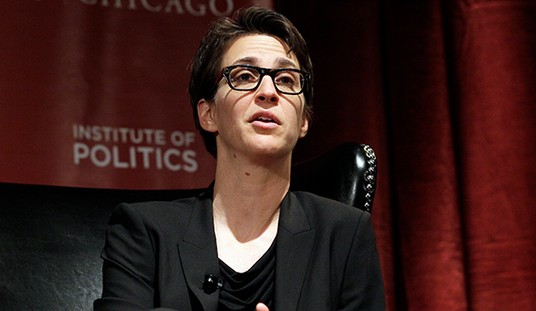It’s not by much, but it’s still going in the wrong direction — at least in the topline. The Department of Labor reported earlier this morning that the number of initial weekly jobless claims increased last week by 31,000 over the week before, coming in at 742,000. They also revised last week’s estimate by 2,000 claims, making the slight increase a bit more substantial.
The news wasn’t all bad, however. The more stable four-week average still declined slightly, and the sharp decline in those receiving benefits continued their sharp decline. But with many states imposing new restrictions on commerce, the direction of today’s report isn’t cheery (emphasis mine):
In the week ending November 14, the advance figure for seasonally adjusted initial claims was 742,000, an increase of 31,000 from the previous week’s revised level. The previous week’s level was revised up by 2,000 from 709,000 to 711,000. The 4-week moving average was 742,000, a decrease of 13,750 from the previous week’s revised average. The previous week’s average was revised up by 500 from 755,250 to 755,750. The advance seasonally adjusted insured unemployment rate was 4.3 percent for the week ending November 7, a decrease of 0.3 percentage point from the previous week’s unrevised rate.
The advance number for seasonally adjusted insured unemployment during the week ending November 7 was 6,372,000, a decrease of 429,000 from the previous week’s revised level. The previous week’s level was revised up 15,000 from 6,786,000 to 6,801,000. The 4-week moving average was 7,054,500, a decrease of 525,000 from the previous week’s revised average. The previous week’s average was revised up by 3,750 from 7,575,750 to 7,579,500.
The problem now with this second metric is that it might no longer reflect only a return to employment. State programs have begun running into expiration dates on continuing benefits for some of the sidelined workers in the pandemic, the Wall Street Journal points out this morning:
Some of the recent drops in continuing claims represent individuals who have exhausted the maximum duration of payments available through regular state programs and are now collecting money through a federal program that provides an extra 13 weeks of benefits. About four million people were receiving aid through this extended-benefits program in the week ended Oct. 24, about the same number as a week earlier, Labor Department data show.
Dmitriy Gekker of Aurora, Colo., was let go from his job as a pharmacy intern in April and began receiving unemployment benefits in early May. He began applying for jobs in the summer but received no response. He said he became seriously worried after the additional federally funded $600 weekly unemployment benefit ended in late July—and started to panic when his benefits were due to run out in November without a lead on a job.
Gekker ended up finding a job, but those will be harder to come by for workers in the leisure and hospitality industry. That’s what renewed restrictions have mainly targeted in governors’ attempts to curtail COVID-19 transmission. Without some sort of payroll support from government, those businesses will have to either lay off their workers or go out of business entirely as their revenue streams dry up.
There’s evidence that consumers have already been pulling back on spending in anticipation of the issue:
Evidence is emerging that consumers are losing confidence in the economic outlook and pulling back on shopping, eating out and other activities. Spending on 30 million credit and debit cards tracked by JPMorgan Chase fell 7.4% earlier this month compared with a year ago. That marked a sharp drop from two weeks earlier. Consumer sentiment also declined in early November and is down nearly 21% from a year ago, according to a University of Michigan survey.
Year-on-year comparisons aren’t entirely helpful in this case, thanks to the stark contextual issues that the pandemic created in March. Month-on-month comparisons are more useful, but unfortunately not much more hopeful. Without another round of stimulus and support from Congress, the US economy is going to take a lot of damage, sooner rather than later.
Will Congress finally act? Don’t hold your breath:
Congress remains deadlocked over a coronavirus relief bill, and lawmakers in both parties are pessimistic about passing one in the near future, even as the election slips into the rearview mirror and the number of Covid-19 cases nationally surges. …
After months of stalemate, negotiations have yet to restart. The impasse is about the price tag and what programs should be funded: House Democrats are pushing for a $2.2 trillion plan, and Senate Republicans want a slimmer $500 billion bill. …
Senate Majority Leader Mitch McConnell, R-Ky., said Tuesday that he has had “no private discussions” lately with House Speaker Nancy Pelosi, D-Calif., about a coronavirus relief bill but that he is displeased with what Democrats are saying publicly.
He said he supports a measure “narrowly targeted at schools and health care providers” and at small-business relief. He also called for giving liability protections to protect businesses and organizations operating during the pandemic. He said he has “seen no evidence” that Democratic leaders will accept that.
Democrats are pushing for something bigger.
Nancy Pelosi wants a whole loaf or nothing at all, while McConnell offers a few slices of toast. It’s the same absurd standoff that has been in place for three months. McConnell has hinted that he’d come closer to Pelosi, and Donald Trump has pushed for a bigger approach, but Pelosi won’t budge off her demand for bloc-granted state aid. Everyone seems to be fiddling while Rome burns, but no one’s fiddling as much as Pelosi. And everyone’s about to pay the price for it.








